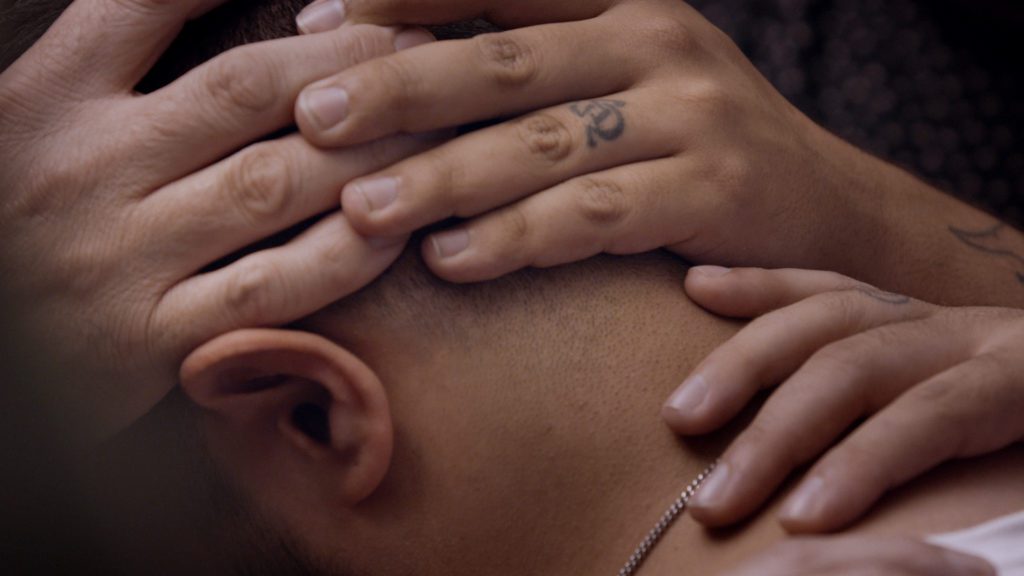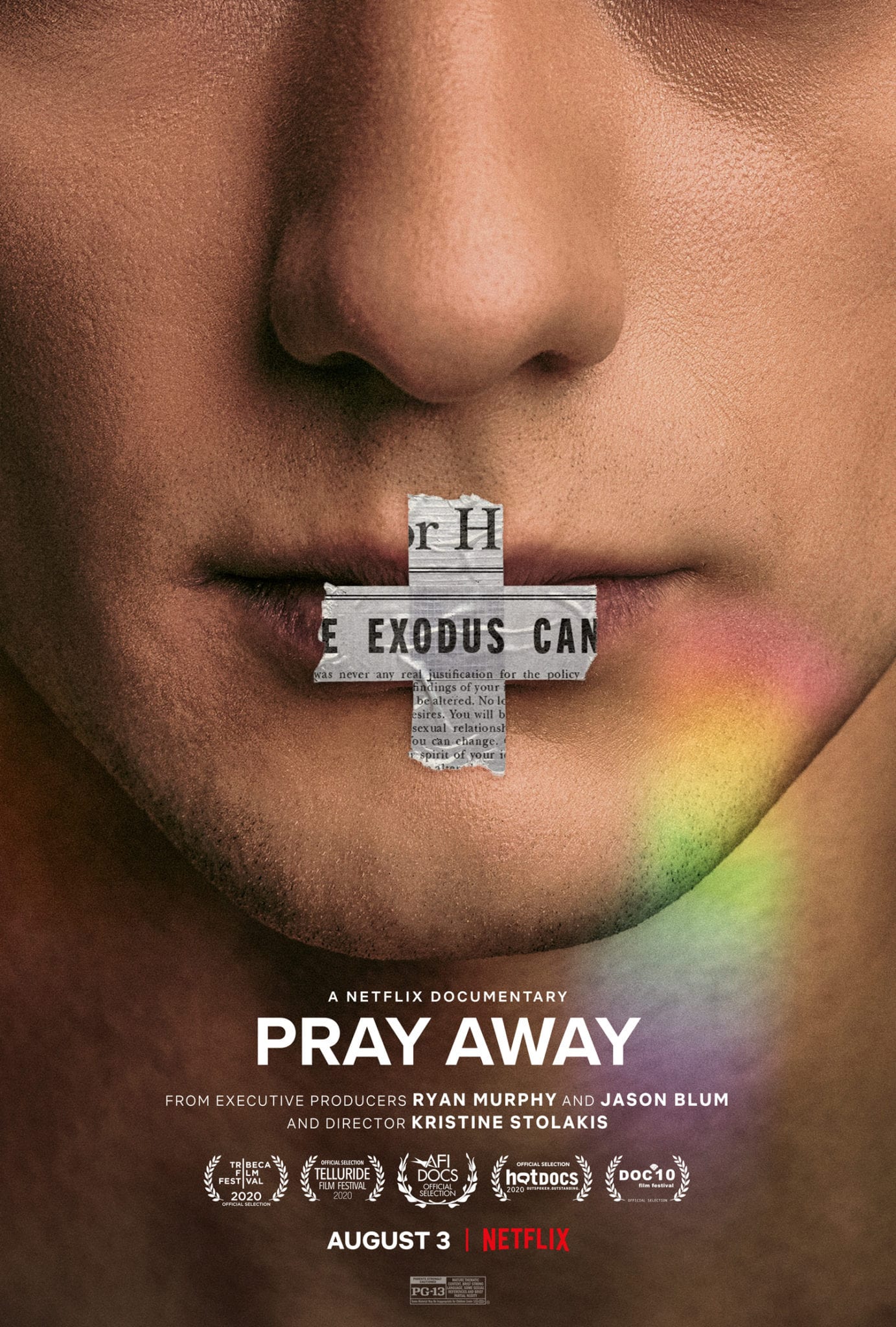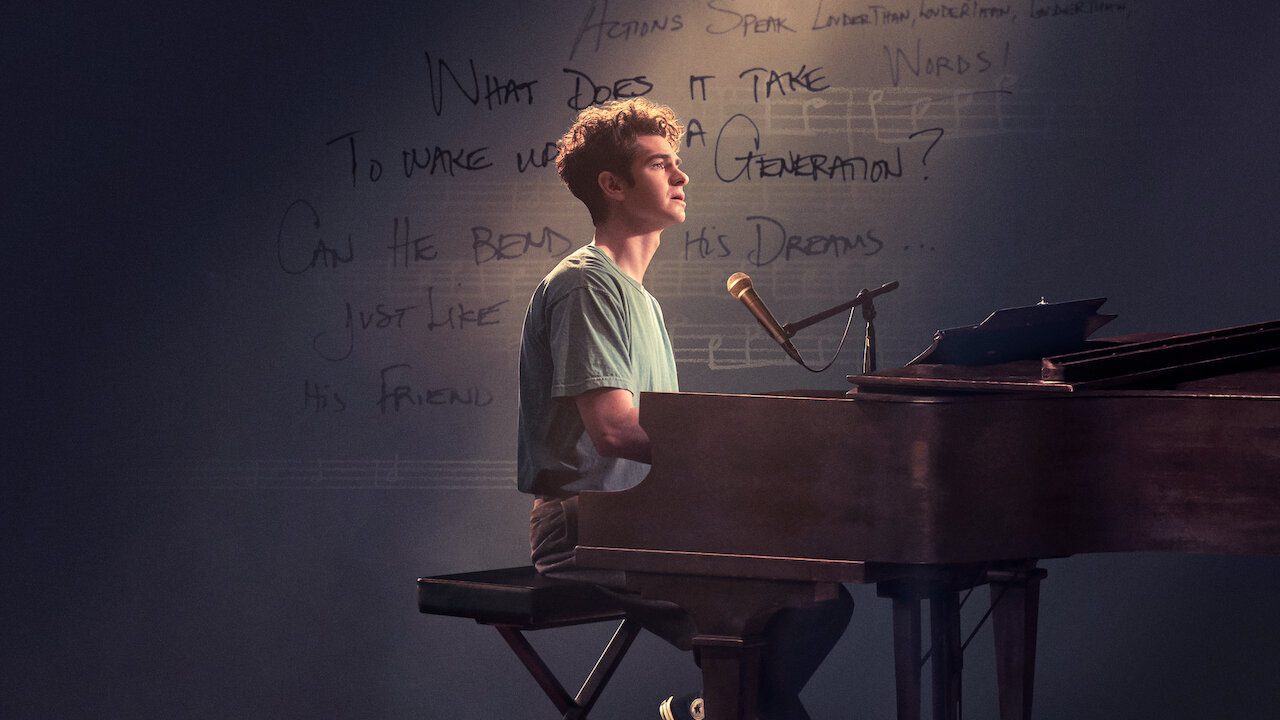I recently had a chance to visit via Zoom with Kristine Stolakis, the director of Pray Away, a Netflix documentary about the ?ex-gay? movement and conversion therapy that hundreds of thousands of LGBTQ+ people underwent in the last fifty years. The basis of that therapy has been discredited and denounced by medical and psychological groups and outlawed for licensed therapists in some states. It continues to be done in many church settings, however. Pray Away will be available on Netflix on August 3.
In the press notes, you mentioned that the subject came to your attention by way of your uncle. Are you comfortable talking about that?
I appreciate you asking that, but yeah.
I got the topic because my uncle went through conversion therapy when he came out as trans as a child. He went through conversion therapy at a time when every therapist was a conversion therapist back in the Sixties. He was put on antidepressants, which was a pretty common treatment at the time, and that began a lifelong battle with various mental health issues which included addiction?prescription medication as well as addiction more generally?anxiety, depression, obsessive-compulsive disorder, suicidal ideations, all these things that I?ve come to learn are quite common for people that go through some form of conversion therapy. I knew my uncle during a really special ten years of good mental health. He was my babysitter growing up. I lived 25 minutes away from him in Upstate New York. I spent most days after school on his couch with him telling me stories, which was very lovely and special and wonderful?a wonderful time in my life. As I got older the mental health challenges continued to mount. I really saw him live with his trauma and the aftermath of his trauma.
So when I went to film school, he passed away unexpectedly a few weeks before I went to film school, and I decided I wanted my first feature to be about the conversion therapy movement. When I started doing research, I was very prepared to feel very angry at the people who led the conversion therapy movement, because I?d witnessed first hand the pain and trauma that resulted from that teaching. I frankly anticipated finding straight, homophobic people and transphobic people running conversion therapy or ex-LGBTQ ministries, but what I found was LGBTQ Christians who claimed that they themselves had changed. And they were teaching others to do the same.
For me, that claim of change really helped me understand my uncle?s desperation that change was around the corner. Because until that moment it was really hard for me to understand why my uncle had committed basically his entire life to the idea of change, and he really believed that what I?ve come to understand as the ex-LGBTQ belief system that being LGBTQ in some way is both a sickness and a sin. It was the claim of change that these leaders made that really clicked in something for me about my uncle?s life. That?s when I transformed from a family member who cared about someone who hurt quite a bit to a filmmaker who said, ?Oh, this is what I want to shine a light on.? This movement really is an example of hurt people hurting other people?of internalized hatred, homophobia, and transphobia being wielded outward. And a lot of my anger transformed into sadness, because I saw that this larger culture of homophobia and transphobia was essentially training leaders. That really is the way this movement works.
The other piece of the puzzle when I started doing research that made me go, ?Oh, there?s really a film here?, is my growing understanding during the research process that this is something that continues into today. We know that nearly 700,000 people in the US alone have gone through some version of this. We know it?s been used on every major continent. And I say ?major? because we don?t know of a recorded case in Antarctica. This is very present in many religious communities across the country. Both of those things, the idea of studying how power works, which is why the movement continues, even though, as many do in my film, leaders defect?leaders come out again and say ?No, no, no, I didn?t mean the things I said. I was lying or I was lying to myself. I?m filled with regret. This is a terrible thing.? The movement continued despite those leaders defecting. That was one piece of the puzzle I really wanted to make a film about. The other was to bring the history into the present and show that this movement that causes a lot of pain continues.
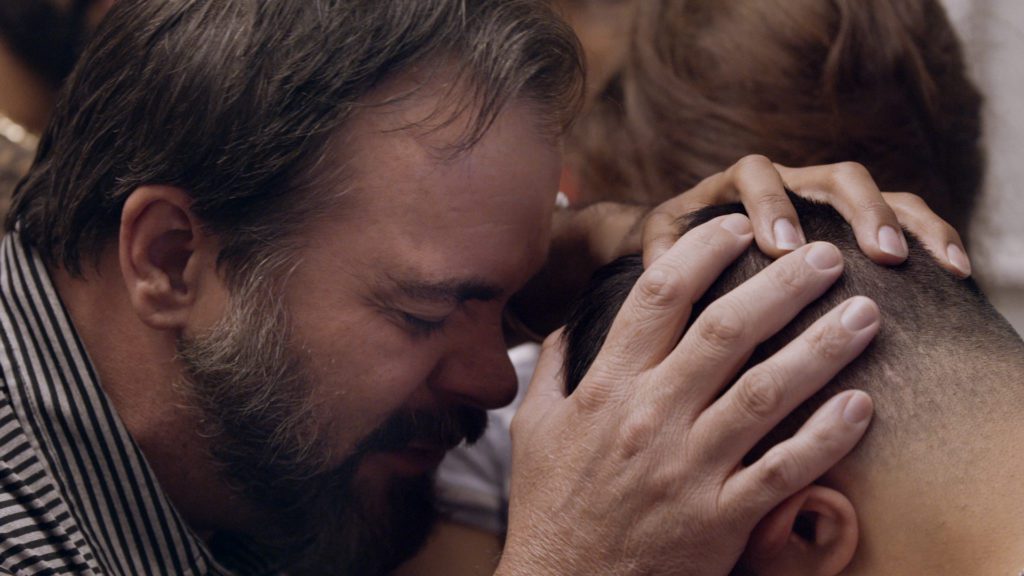
Early on Michael Bussee says ?We were doing what we thought God wanted us to do.? How did that attitude affect how you tried to represent these people in your film?
I know first hand that many people heading conversion therapy or ex-LGBTQ movement are trying to do the right thing. For people who grew up religiously, or express what the right thing is through religion in some way, that can mean that they think God is asking them to do this. That is a very powerful motivator?to believe that you are on the path to change yourself?and a very powerful motivator to ?help? other people. I think that motivation, those good intentions, can blind people to the pain that they?re causing. It can make them through denial, or sometimes through the structure of their ministries, push away people that don?t want to change anymore, that have addiction issues after going through this. It can blind leaders to the pain that they?re causing, because they are so motivated from what I think ultimately is a good place.
Something we talked a lot about in the edit room in making this film was trying to make a film that is compassionate. Because this is a movement in which the leaders are often victims of conversion therapy themselves. So we wanted to capture that, but we also did try in the film to hold leaders, both former and present, accountable by weaving in a survivor?s story as well, which is the story of Julie Rogers, who like my uncle, primarily participated in the movement through not being in the position of leadership, but receiving these messages as a teenager and then in her young adult phase. And that was how creatively we worked to say this does cause pain, true pain, witness this pain. And also, we did try to honor the fact that this is not a system of just bad apples. This is people, especially in the beginning that think that they?re doing the right thing, and in answer to your question, things that God might even be asking them to do this thing.
I?ll say one other piece of that, because it?s a really rich question, that I haven?t said in other outlets, and also know that you are someone who lives in a religious world. There is a very common idea in this world that I?ve seen a lot, which is that God shows his love through challenges, through pain, through suffering. I saw that a lot. I think that very sadly gets in the minds of many leaders, and participants, that if they are suffering, they are actually on the path to change. I think that for people who are trans and gay, suffering is a part of the package when you live in a transphobic and homophobic world. Asking people to suffer, it confuses people thinking it?s their responsibility to change rather than the world?s responsibility to change.
I would urge religious leader who are trying to figure out how to make sure, that they are being clear that they don?t support conversion therapy; they don?t support the ex-LGBTQ movement. They need to proactively affirm and fight for LGBTQ folks. Because the message that being trans and gay is wrong is so common and ubiquitous, I think in Christianity in general, that unless you actively fight against it, there?s a good chance that your congregation is going to get that message. I think underneath that is the assumption that you?re going to suffer, and that?s okay. We?ve got to stop that, and I think we can stop that if we see this as a way to prevent children suffering versus a political issue. Yes, that idea of suffering as a form of God?s love is an ideology that I see being passed around that I think ultimately hurts people.
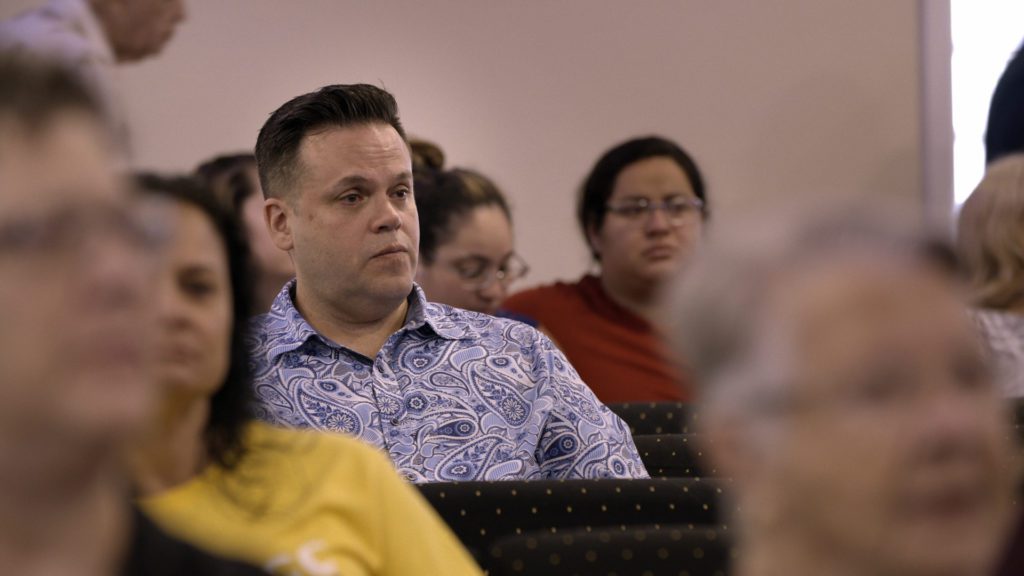
A good part of your film deals with the political power dynamic of the religious right. What was the main insight you discovered in that area?
I was very stressed and saddened by the way in which the Christian right, politically speaking, would use the stories of people who claimed that they had changed to support anti-LGBTQ legislation. So in our film that is explored through recounting the story of Prop 8 in California which made gay marriage illegal in the state in 2008. Outside of the scope of the film, we?re seeing that happen with anti-trans legislation, which is being passed a tremendous amount in the past year. We?re seeing the way in which people who claim to be ex-trans or claim to be detransitioners, those stories are being used to support legislation that takes away trans rights for everyone, whether or not you are religious.
That is very sad to me, because it?s taking people who are already in a very vulnerable place, who, again, are victims of homophobia and transphobia more largely and putting them on a stage and saying ?Please fight against your own community?s rights.? And again, I think that those organizations, they have a choice as our culture changes and we understand, based on so much research and so much antidotally, that LGBTQ people need to be supported and protected and loved. They are not a threat, to say the least. They have an opportunity, I think, to support these people in being truly who they are, but instead I saw them use these people, and that is incredibly insensitive to me.
You avoid telling the horror stories of the people who had undergone conversion therapy, but you allude to the trauma that people went through. Was it tempting to go to some of those dark places to make the point of the pain caused?
We have recorded cases, and there are plenty of them, of people who go through conversion therapy and experience physical pain, electric shock therapy, aversion therapy. That is abhorrent. And the vast majority of conversion therapy does look much less like that and much more like talk therapy?like sitting in a room with an individual who is either a licensed counselor or more often someone who is a religious leader who is acting as a pseudo-counselor, or perhaps it looks like a Tuesday night Bible study on the subject of homosexuality in the Bible, where the belief system that being LGBTQ is sick and sinful gets pushed forward and it?s kind of like AA model peer support. We want in the film to make sure that the main way conversion therapy is practiced is represented, so that people who are doing this didn?t see the film and go, ?We don?t do that. We don?t shock people. Therefore, we?re not doing conversion therapy.? That being said, like the physical manifestation of trauma through self-harm is extremely common in this movement. We do explore that in the film, and also allude to the fact that sadly suicide is quite common in this world. We know that you who go through this are more than twice as likely to have attempted suicide. That is something that we do touch on in the film.
A big problem with the conversion therapy movement is that a lot of people who do it don?t see themselves as doing it. Everyone has the stereotype that conversion therapy happens in camps in the woods and it?s electric shock therapy. Much more often it?s happening in your church, down the street, by a pastor who might think they?re doing the right thing, who?s teaching pseudo-psychology that?s been disproven that?s been passed through a chain of information to this gay kid who came to them for help. That is conversion therapy. Call it whatever you want?pastoral counseling, I?ve heard, for example. We need to create a common understanding that starts a dialog that what?s happening in your church down the street might not look like the conversion therapy idea that you have in your mind, but it is. That?s why we took the approach we did in the film.
We really did represent conversion therapy as it happens most often in our country. And it mostly does happen in religious organizations. We know that about two-thirds of conversion therapy happens within religious organizations?religious colleges, Christian ministries, churches. It?s only about a third or less that happens with licensed counselors. So if you see, for example that conversion therapy has been banned in X state, that?s only for licensed counselors. It is important to do that work, but it doesn?t stop it where conversion therapy happens most. We have to have a culture shift. We have to have a national and international dialog that sees conversion therapy for what it is. And we need churches to stop what they?re doing because unfortunately laws cannot stop that. It has to be people changing their minds. So we really want to reach those people with this film.
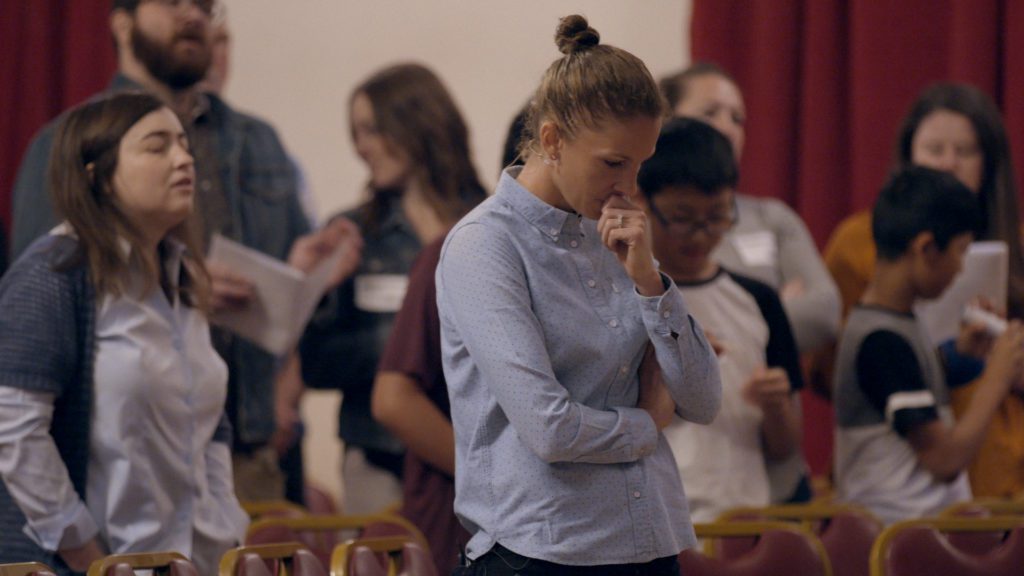
We see some of your subjects in church now as openly LGBTQ persons. But I know that for some people church is just too painful. Did you note spiritual injury among these people as you talked with them?
Yes, absolutely. I saw two main types of reactions regarding spirituality following an experience of conversion therapy. This is of course a generalization. One set of reactions is ?My religious life is so important to me I don?t want to have to give that up. And I cannot continue to live as someone who?s trying to change their sexuality or gender identity.? And a lot of people do find, because it absolutely exists, religious communities that fully accept people for who they are, and again, not only accept them, but fight for their rights to dignity. And for some people that is so healing, to be able to be in a church and have a pastor say, ?Not only welcome, but we?re going to lobby for the Equality Act next week.? That can be so healing for people.
There are some people, to your point, where just being in a church almost can create a PTSD-like response, because of the pain and trauma people have endured often when they were children. For those people, sometimes the healthiest thing to do is to step away from trying to be a part of a community where your religion, your spirituality, is expressed through organized religion. For that group of people, I?ve seen the fact that going to brunch on Sunday with friends becomes very healing. And that?s okay too. We are not here to tell people how to heal. How to find community is up to the individual. If people want to express their religious life through organized religion, they can absolutely find places to do that. If people want to step away from organized religion and that to them feels like healing, that?s fantastic. So, I?ve seen both.
And to answer your question very directly, absolutely, spiritual wounds are a part of it. For a lot of people, they?ve grown up learning that having a relationship with a higher power, which often in this world is through God and through a relationship with Jesus, has to come with a cost. If you believe that for years, it can be very very hard to reengage with that form of relating to a higher power through organized religion. Again, it can create some kind of PTSD response. So, yeah. You hear survivors talk about this. ?I didn?t only lose my sanity. I didn?t only lose my mental health and my physical health. I lost my relationship to God when I had to step away from this.? That?s where I think churches have to step up. They have a responsibility to say if you want to practice religion here in the way that you grew up, you?re welcome to do it. Churches have to be proactive if they want to fully affirm LGBTQ people, because it?s overwhelmingly the message that people still get is ?you?re not welcome here,? and that has consequences.
